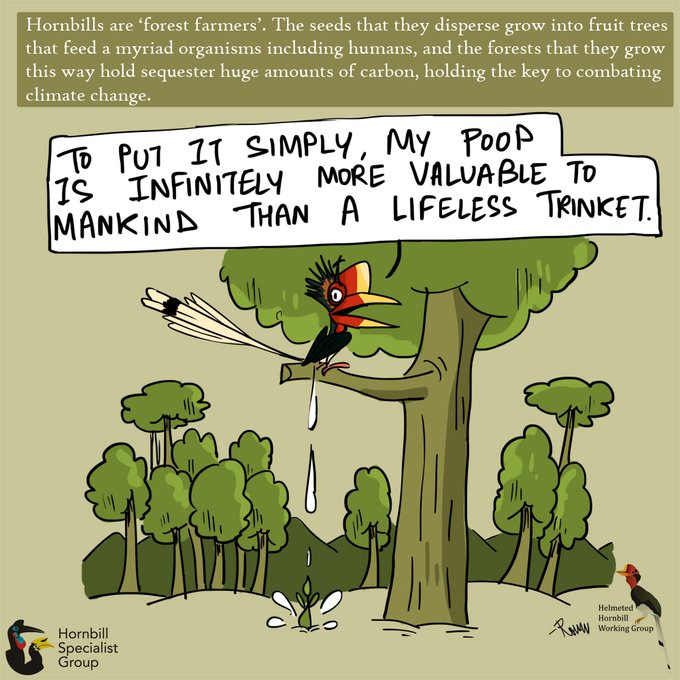populationsのTwitterイラスト検索結果。 301 件中 10ページ目
Sometime between 370-150,000 years ago Neandertals got a Y chromosome from a more modern-like source population. This ultimately spread throughout all later Neandertal populations from which anyone has sampled DNA.
In our new #sciart talk, @RackebT will explore what it means to make #scicomm inclusive for various populations. The importance of using audio storytelling and how to meaningfully collaborate with overlooked voices and perspectives.
Register now! https://t.co/bW7FDu851q
Globally monitored migratory freshwater fish populations have declined by a staggering 76% on average since 1970. So sad.
https://t.co/k4TpKUmYSK
🆕 | Exposure to microplastic pollution is reducing the capacity of bivalve populations, such as mussels, to provide invaluable ecosystem services, according to research by @UofGSoLS scientists.
🖱️ Full story: https://t.co/4yEsHNG1II
🖱️ @ElsevierConnect: https://t.co/h05TDYebCt
@crazyiIIusions @marysuewriter I'm sorry but in what twisted nightmare realm do people see this as a duck straight away? What horrible genetic defect has been inflicted upon your duck populations?
Happy #GlobalTigerDay 🐯!
Illustrated protestor by @/thecuriousnomad on Instagram 😊
Tiger populations are increasing in 5 countries! This is fantastic news for tigers who are at risk of becoming extinct in the wild.
See our #KidLit4Climate gallery here -
https://t.co/HDasOFnG8s
🛑BREAKING the new #LPImigratoryfish report finds globally monitored migratory freshwater fish populations have declined by a staggering 76% since 1970! In Europe populations have declined by a whopping 93% 😟
Check out the report for more details 👇 https://t.co/P3boUbti2s
New report!
Europe's migratory freshwater fish populations have collapsed by 93%! #Dams, many for #hydropower, are key drivers.
In 🇪🇺 we urgently need:
1️⃣ Full #WFD implementation
2️⃣ A BIG shift in how #hydropower is perceived, authorised & financed
https://t.co/94tWQvu0Cq
" #Polarbears will be wiped out by the end of the century unless more is done to tackle #climatechange, a study predicts.
Scientists say some populations have already reached their survival limits as the #Arctic sea ice shrinks."
This sad news make me think of this #illustration https://t.co/RHS5x3Q401
As temperatures and populations soar and plastic fills our oceans, this bullet catcher is seriously worried about what sort of world we are leaving for the eventual release of NO TIME TO DIE...
Fourth in the #AISOPEN is THE BODY POLITIC
The images in this series consider the significance and insignificance of the vast populations present during change.
See THE BODY POLITIC and the rest of 'Now We Are Free' here: https://t.co/eRGwbVI3ov
#ais2020 #online #exhibition
Machine Learning Classification of Kuiper Belt Populations. https://t.co/ogCsNfnFdr
#PSG, in collaboration with @Seabirders celebrates the 4th annual #WorldSeabirdDay today. The last known sighting of the #GreatAuk was on July 3rd, 1844. We commemorate this date to raise awareness of the continuing #conservation threats to #seabird populations worldwide
Remembering Milton Glaser, I focus on his far darker artistic designs for @WHO, working with Jonathan Mann to draw attention — in evocative imagery — to the rising threat of #AIDS among #LGBTQ populations.
How can health imagery better frame human rights?
https://t.co/0gU7NEtrJc https://t.co/6YBvEz1SjS
I’m doing some Byleth sticker designs, but also hey since you’re here, the Native populations here in America are suffering from the COVID-19 outbreak with little (if that) to no support.
https://t.co/6H6AD28BfH
...given the name "Ndéh-Dwipah", (literally translated as "mother river" - which is ironic considering it's a huge ocean). An image highlighting the original area of the tribes is included below. As the populations of these tribes grew, they became more and more...
#Puffin #Fraterculaarctica. Populations of this gorgeous seabird have fallen due to a decline in sand eel populations (climate change & overfishing), but seeing puffins nesting on #Skomer remains one of my most treasured wildlife experiences. @skomer_island
[#Patrimoinenaturel] : Voici une synthèse régionale inédite sur les populations d’#oiseaux hivernants et migrateurs d’Aquitaine, disponible sur https://t.co/RinFH7dIZl
Amandine THEILLOUT, @abesnardEPHE Florie DELFOUR et Serge BARANDE
#ornithologie #biodiversité #wildlife














































